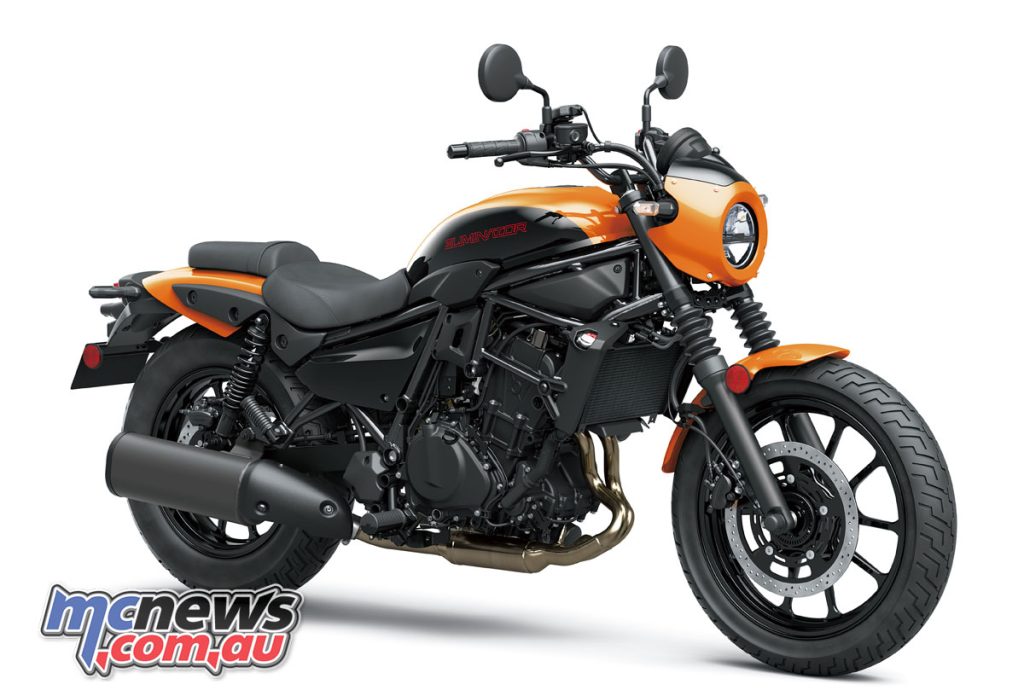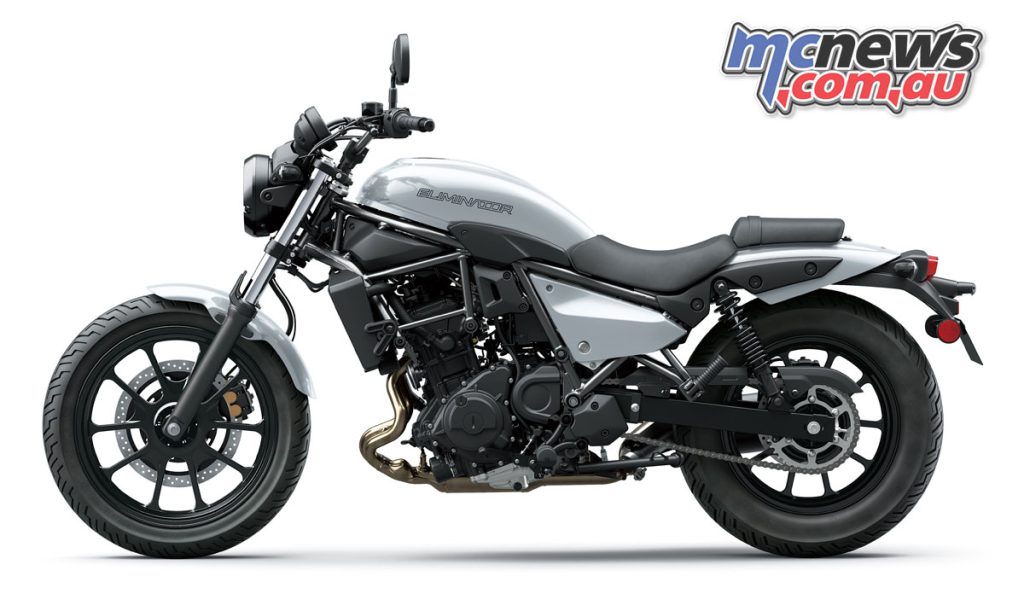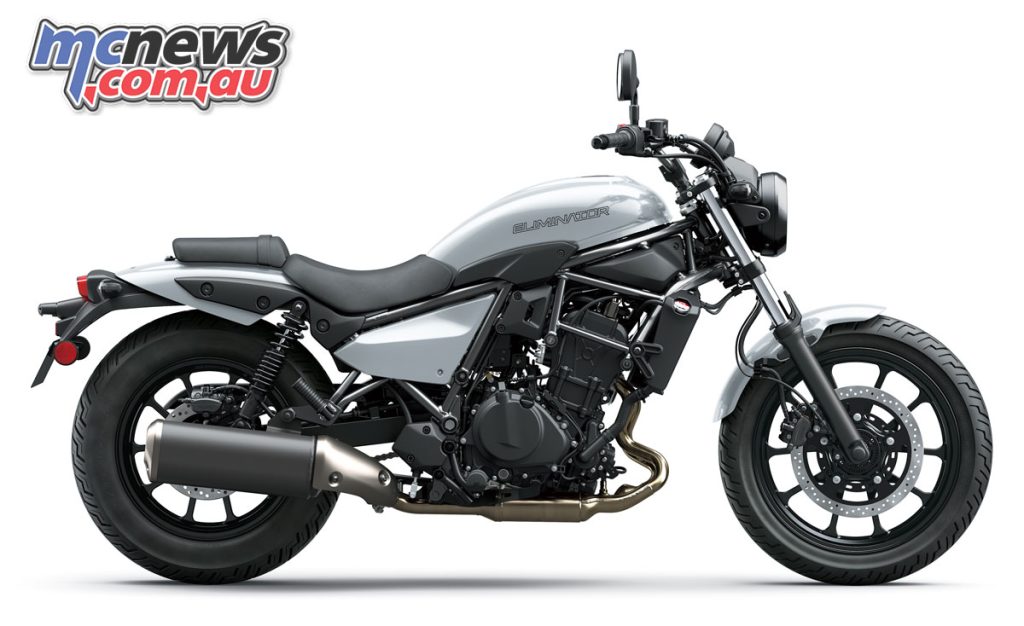2024 Kawasaki Eliminator
Kawasaki’s new Eliminator has been confirmed for Australia with both a standard and SE version to roll in to the LAMS category, in what is likely to be a competitively priced and performance driven cruiser available to new riders who don’t mind a more modern package.
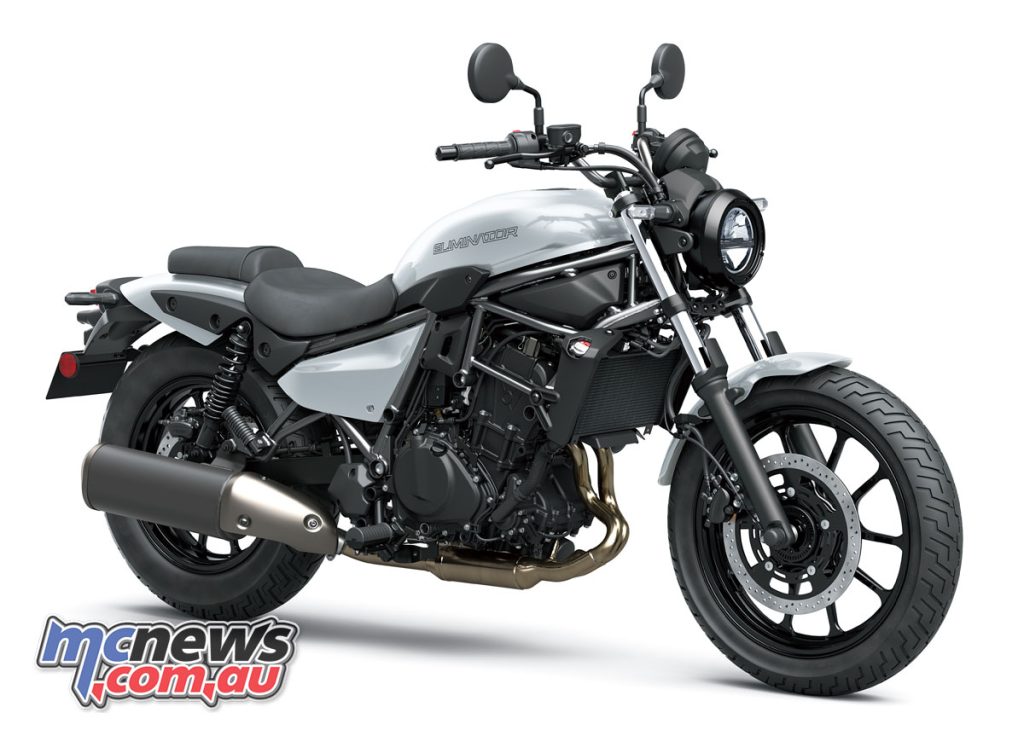
The 451 cc powerplant appears to be a stroked Ninja 400 derivative, retaining the 70 mm bore, but increasing to a 58.6 mm stroke, to explain that 52 cc capacity increase.
From a performance perspective, we actually see the claimed power figure drop to 33.4 kW from the Ninja 400’s 35 kW, if at a slightly lower 9000 rpm, but this isn’t surprising, given this is a cruiser.

Instead we see a decent boost in torque to 42.6 Nm at a much lower 6000 rpm, up 5.6 Nm and arriving 2000 rpm sooner than the bike’s sportier 399 cc cousins.
The liquid-cooled parallel-twin layout is retained, so for those hoping for a V-twin will be left disappointed, although a slip and assist clutch, six-speed gearbox and 176 kg kerb mass are nice to see, especially considering that’s with at least 90 per cent of the 13 litre fuel tank full.
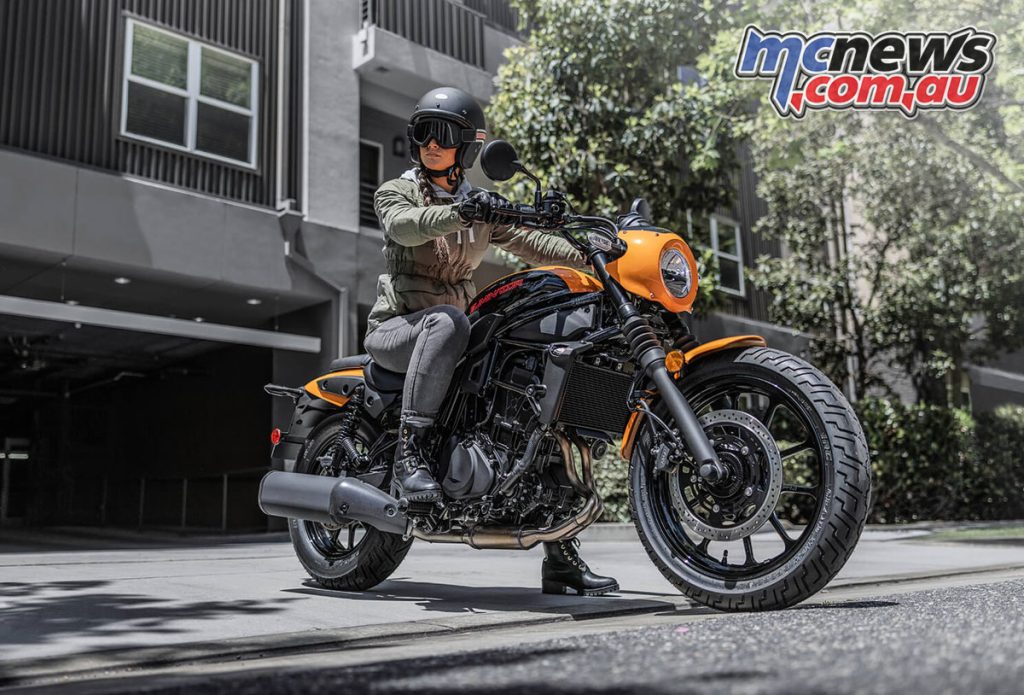
Seat height is an inviting 735 mm too, with fairly rear set foot controls offering a more compact set to ‘peg ratio, rather than stretched out forward controls.

Images reveal what looks like a decent reach to those ‘bars, which should ensure an upright seating position for most riders, with close to a 90-degree angle at the knee.
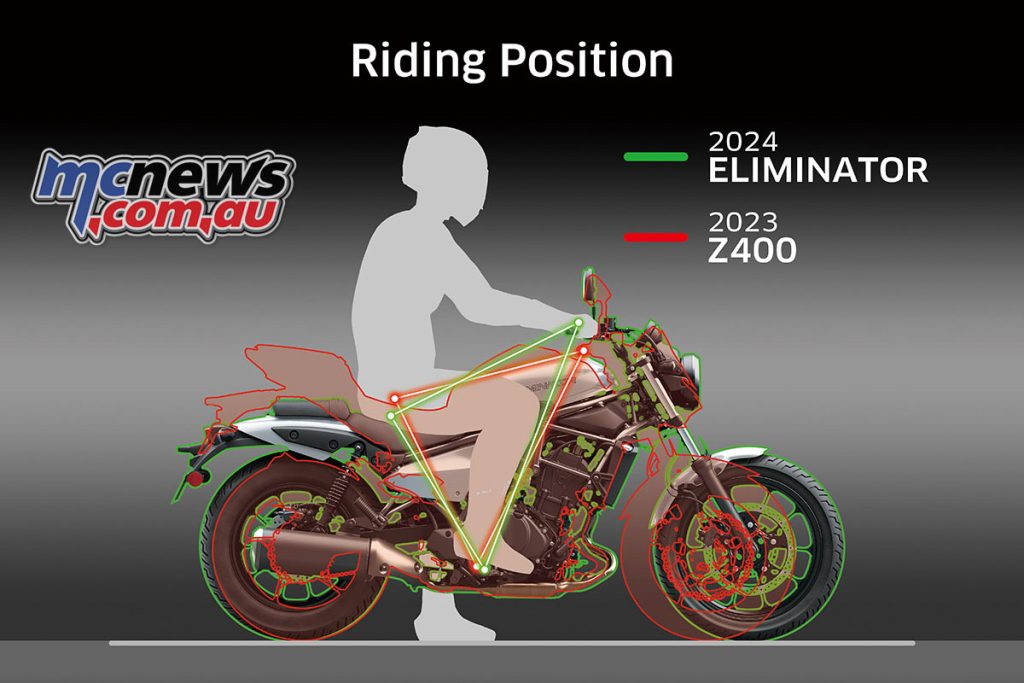
Compared to the Z400 the Eliminator offers a lower seat, more forward foot controls and taller bars, while a comparison to the larger Vulcan S demonstrates that tighter seat to ‘peg ratio and longer reach to the ‘bars.
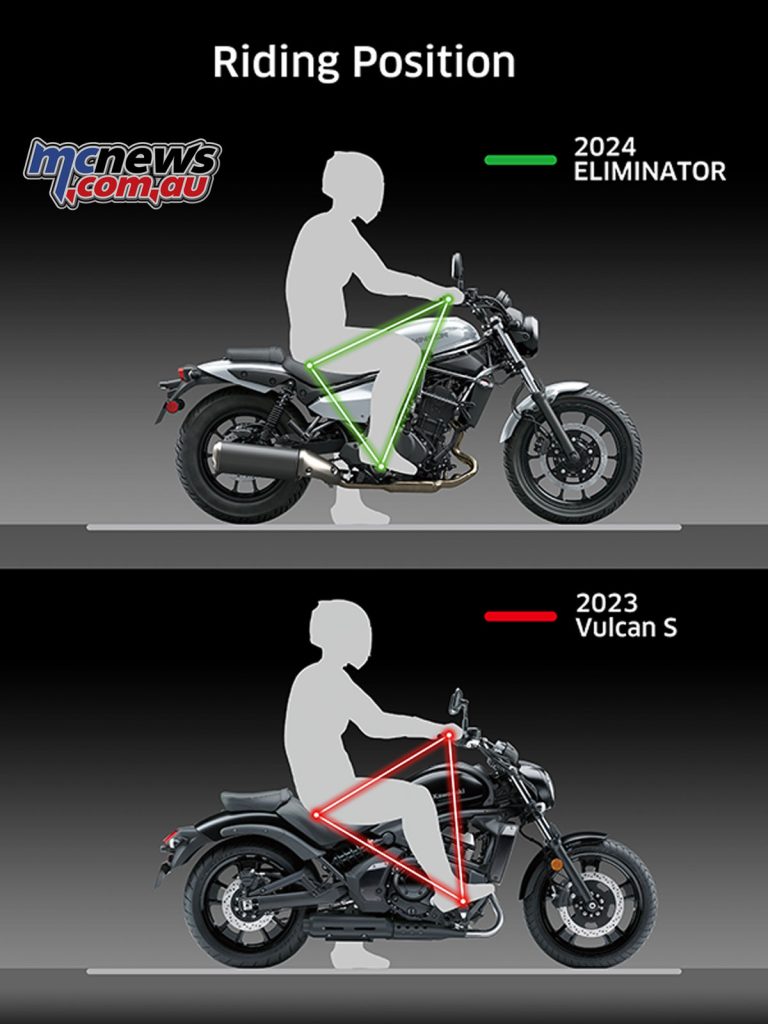
A high-tensile steel trellis frame is run, and mated to a set of 41 mm telescopic forks, as well as twin shocks, the former mirroring what we see on the Ninja 400 and Z400 as far as forks.
Travel is 120 mm front and a shorter 90 mm at the rear, with ground clearance of 150 mm.
The wheel combo is an 18 inch front and 16 inch rear, running 130/70 front and 150/80 rear rubber, with a single 310 mm front rotor and two-piston caliper setup.
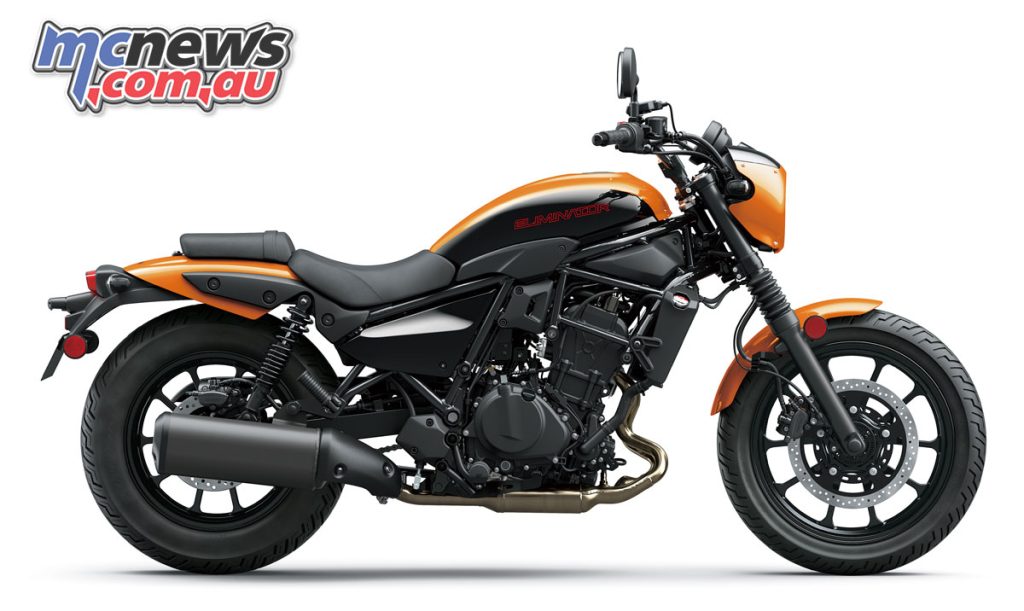
The rear runs a 240 mm rear rotor with another two-piston caliper, and ABS is standard fitment in Australia.
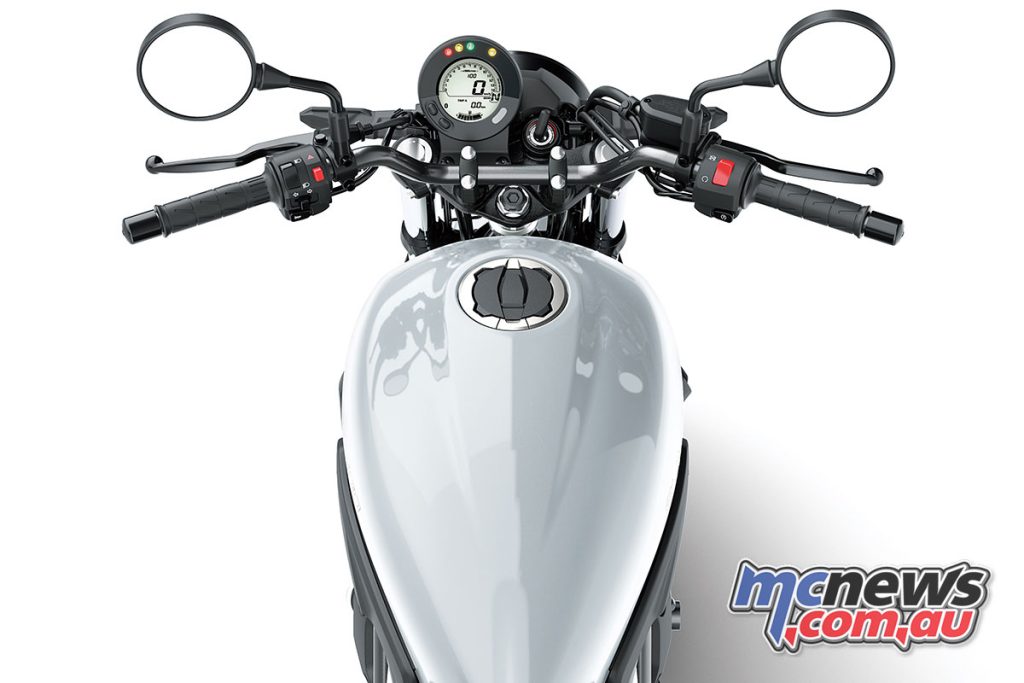
A single round LED headlight keeps things simple at the front end, with LED lighting all round, and smartphone connectivity is standard with a round LCD dash run off-set on the bars.

The Eliminator SE adds a headlight cowl, colour matched to the Special Edition colour, alongside a two-pattern seat, and handlebar mounted USB-C outlet.
An accessory high and low seat are also available to further tailor the ergonomics to different height and size riders, dropping the seat height to just 715 mm on the Low seat and up to 765 mm on the High seat.
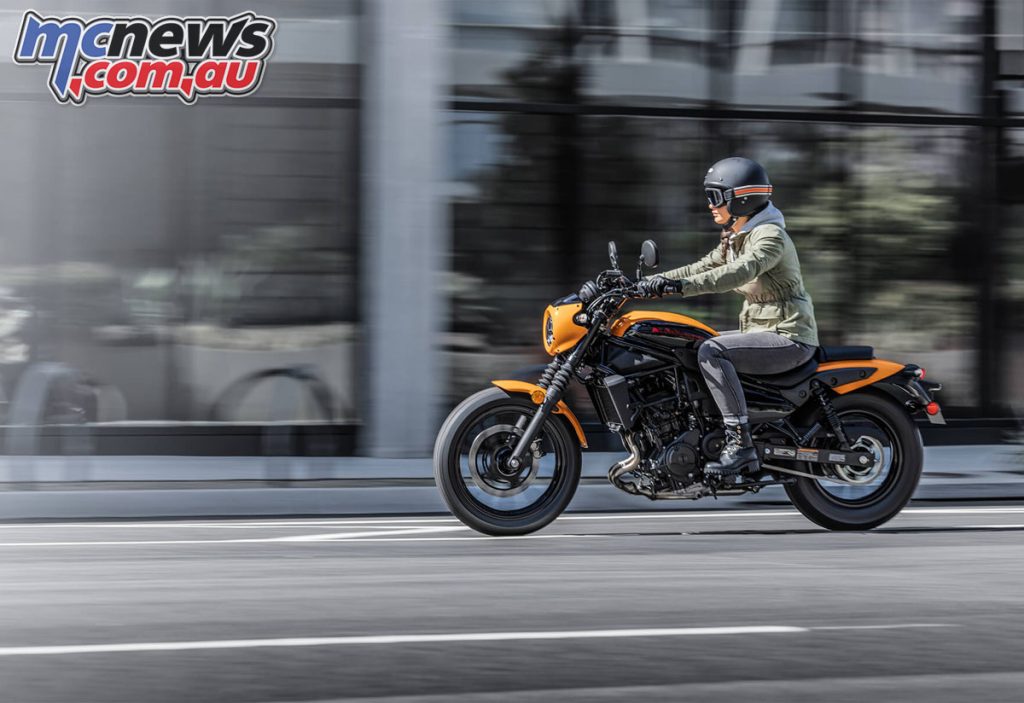
It looks like Kawasaki have kept the exhaust fairly clean, with a small collector and a fairly non-descript muffler, which receives a blacked out head shield on the SE, to match the rest of the blacked out components, like fork tubes and frame.
A long and low tank receives most of the paint, as well as the tail and front guard, with a neo-retro theme likely to hold wide appeal, if probably not within the traditionally minded riders, or those who want a cruiser dripping in chrome and black paint.

Round blacked out mirrors join non-adjustable blacked out levers, and there’s a pillion seat, for two-up riding.
Pricing and availability will be announced closer to the release date, but looking at US pricing the Eliminator carries a fairly large premium over the Ninja 400 for comparison, and lands very close to probably its closest competitor – the Honda CMX500 (Rebel 500).

It’ll be interesting to see where it lands as far as on-road pricing here in Australia.
2024 Kawasaki Eliminator Specifications
| 2024 Kawasaki Eliminator Specifications | |
| Engine | Liquid-cooled, four-stroke Parallel-Twin, 451 cc, DOHC, 8 valves |
| Bore x Stroke | 70.0 x 58.6 mm |
| Compression Ratio | 11.3:1 |
| Maximum Power | 33.4 kW {45 PS} / 9,000 rpm |
| Maximum Torque | 42.6 Nm {4.3 kgfm} / 6,000 rpm |
| Fuel System | Fuel injection: ø32 mm x 2 |
| Lubrication | Forced lubrication, wet sump |
| Transmission | Six-speed, return |
| Primary Reduction Ratio | 2.029 (69/34) |
| Final Reduction Ratio | 3.071 (43/14) |
| Clutch | Wet multi-disc, manual |
| Final Drive | Chain |
| Frame | Trellis, high-tensile steel |
| Front Suspension | ø41 mm telescopic fork |
| Rear Suspension | Twin shocks |
| Front Wheel Travel | 120 mm |
| Rear Wheel Travel | 90 mm |
| Rake | 30° |
| Trail | 121 mm |
| Steering Angle (L/R) | 35° / 35° |
| Front Tyre | 130/70-18M/C 63H |
| Rear Tyre | 150/80-16M/C 71H |
| Front Brake/s | ø310 mm disc |
| Front Caliper/s | Dual-piston |
| Rear Brake | ø240 mm disc |
| Rear Caliper | Dual-piston |
| Dimensions (LxWxH) | 2,250 x 785 x 1,100 mm |
| Wheelbase | 1,520 mm |
| Road Clearance | 150 mm |
| Seat Height | 735 mm |
| Curb Mass | 176 kg |
| Fuel Capacity | 13 litres |
